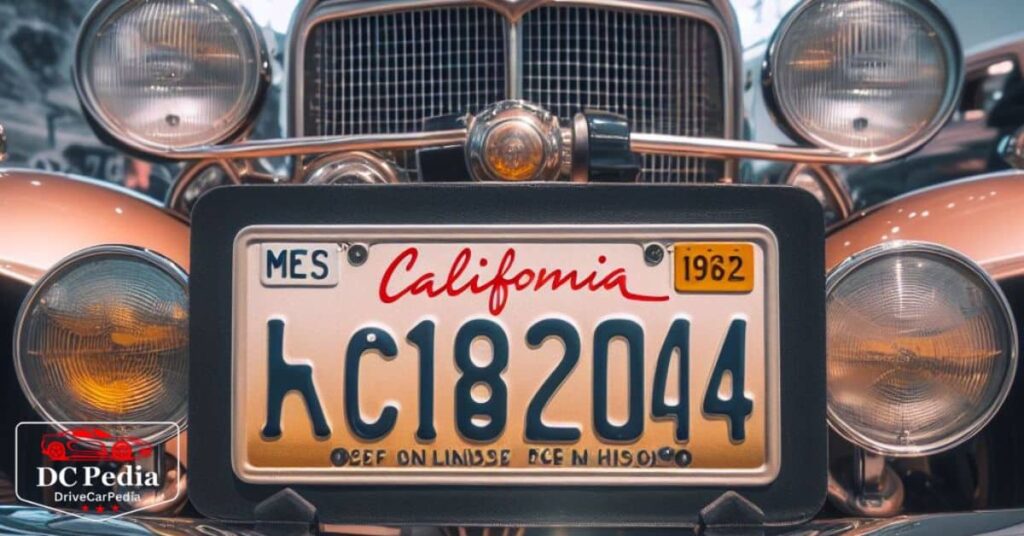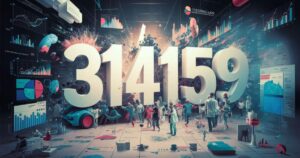A California license plate is a metal plate attached to a motor vehicle or trailer operating on public roads to uniquely identify it and where it is registered. The plate displays the U.S. state or territory as well as a registration number, born by all registered vehicles.
Have you ever noticed the colorful designs on California license plates? From images of beaches and mountains to celebrities and landmarks, the varied plates tell stories about the diverse state. One plate even features a stylized drawing of a California poppy, the state flower.
California was the first state to require license plates, which help fund important transportation projects. Today’s plates feature different themes celebrating California’s agricultural products, geography, cultures and history. The state issues over 25 million new plates each year.
California License Plate lookup
Conducting a California license plate lookup is a straightforward process. One can easily search for vehicle information through the Department of Motor Vehicles website. All you need is the license plate number to get started. The DMV database will return the registration details of the matching car or truck. This includes the registered owner’s name and mailing address.
Some key facts are left out for privacy protection. Details like the owner’s phone number or driver’s license information remain confidential. But the basic ownership details retrieved from a license lookup can still be useful. It allows for identification in various situations like traffic accidents, parking violations or stolen vehicles. Insurance firms and law enforcement also rely on the plate number database for verification needs.
Read More: What You Mean License Plate Lookup?
Legal Regulations for License Plate Lookup in California
In California, license plate lookups are permitted and regulated by law. The DMV maintains a public database of vehicle registration records that can be accessed online or by phone. However, there are restrictions on the information disclosed to follow privacy protocols.
Only the vehicle owner’s name and address are viewable – no details like medical data, phone numbers, emails or photos are released. Commercial services are also not allowed to mass download and resell drivers’ personal information without consent. Misuse of lookup access or distributing restricted data is illegal.
Conducting lookups is generally allowed for legitimate purposes like accident reports, parking tickets and verifying insured status. Law enforcement can access additional details during criminal investigations with proper authorization. Regular citizens are limited to basic ownership facts, while businesses may need to demonstrate their lookup need is transportation or insurance-related. Excessive automated querying is prohibited to deter potential stalking or harassment attempts.
Official Channels and Procedures
The California DMV provides an online license plate lookup portal on their public website foreasy searches. Users simply enter a plate number and the corresponding registration record is displayedif found. Checks can also be done in-person at DMV offices or by phone. Law enforcement has separate direct database access when needed for time-sensitive incidents.
Commercial skip-tracing services not affiliated with DMV license their own lookup platforms with additional paid features. However, they are only permitted to disclose the same basic information available through official state systems. All requests must be manual and individual – automated bulk downloads or harvesting personal details at scale are prohibited by law.
Privacy and Ethical Considerations
When utilizing any license plate lookup service, users must be mindful of the vehicle owner’s privacy. Information should only be accessed on a need-to-know basis for legitimate purposes like identifying accident or parking violators. Mass querying random plates out of simple curiosity can be considered an invasion of drivers’ personal information.
Plate lookup services should also avoid potential misuse Cases like stalking, scamming, or identity theft targeted against individuals. Providing records only to verified requestors for clear transportation, insurance or law enforcement needs helps balance data access convenience with protecting confidentiality. All agencies and portals are expected to comply strictly with California privacy regulations overseeing use of motorist records.
California License Plate lookup owner
Looking up the registered owner behind a California license plate number is legal. The DMV maintains accurate records of all vehicle registrations in the state. Enter the plate digits and letters on their site to retrieve the matching account details. This will show the name of the individual or company that currently owns the vehicle.
However, access is limited only to the basic registration facts. Specific details concerning the owner’s address, driver’s license, date of birth and other private statistics remain private. This protects people from potential identity misuse if their file was shared extensively. But a plate search still serves a useful purpose, especially in cases involving parking or traffic violations where the driver fled the scene. Law enforcement can also run checks to spot stolen cars or verify insurance compliance.
California License Plate options
Car owners in California have different options when customizing their license plates. The standard government-issued plates come at no additional fees. But those seeking personalized variants can choose a message up to 7 characters long for an extra cost.
Popular customized themes let drivers showcase names, words, dates or slogans that suit their interests. There are also over 130 specialized plate designs. These feature causes like breast cancer awareness, colleges and professional sports franchises. Motorsports plates indulge auto enthusiasts too.
Customizing plates is an fun way for Californians to add personal touches. Just keep the content appropriate by avoiding offensive languages. The state also has special commemorative editions issued periodically to celebrate important events in history.
| California License Plate Options | Cost | |
| Standard | $40-60 | |
| Customized | $75-100 | |
| Specialty | $50-98 | |
| Collegiate | $50-80 | |
| EV Plates | $100 |
| California License Plate Designs | Year Introduced | Special Features |
| Golden Bear | 1955 | Iconic symbol of California |
| Poppy | 1960 | Features California’s state flower |
| Visit California | 1965 | Promotes tourism to the state |
| Yosemite | 1970 | Depicts landmarks from Yosemite Park |
| Pacific Coast Highway | 1980 | Scenic coastal highway route |
| State Parks | 1981 | Various state park landscapes |
| Patriotic 911 Memorial | 2002 | Honors Sept 11 victims |
| Salute to Ag | 2011 | Celebrates California agriculture |
| National Parks | 2013 | Iconic national parks locations |
| California Condor | 2014 | Endangered bird rehabilitation |
| California Poppy | 2016 | Updated design of state flower |
California License Plate format
Standard California license plates follow a consistent numbering format. The identification code begins with three digits, then a hyphen, and concludes with three alphanumeric characters.
For instance, a sample plate may read 345-ABC. This style has been adopted since the 1950s for easy readability and to prevent number duplication as the vehicle population grew exponentially. Reflective stickers were later added containing the same numbers and letters to heighten visibility in low-light conditions.
Full replacement plates are issued every 5-7 years on average as numbers get repealed after expiry. Motorists also obtain new plates when transferring vehicles between individuals or moving to another state. This ensures records are updated accurately at the DMV.
California License Plate history

California led the way for standardized license plates in the United States way back in 1903. Initially plates were made of leather and simply displayed the city or county of registration. But as automobile popularity surged in the 1920s, easy identification on congesting roads became necessary to improve safety and enforcement.
Over the decades, California plates shifted through various designs, colors and numbering schemes to prevent duplication. Specialty commemorative editions were also released highlighting major events. In the 1960s, reflective stickers with the same imprint were introduced for enhanced nighttime visibility.
Recent decades have witnessed designs celebrating diverse themes like Yosemite National Park’s granite formations, California poppies and iconic surfing imagery. Plates also promote tourism to places like Monterey and Lake Tahoe. Through constant innovation, the DMV ensures identification remains convenient yet rich in cultural context.
History of California License Plates
Can I use the California license plate lookup to find information about a specific vehicle’s registration status?
Yes, you can use the California license plate lookup tool to find basic registration information about a specific vehicle. Here are some key points about using the lookup:
- The California DMV maintains a database of all registered vehicle records in the state. This includes passenger vehicles, commercial trucks, motorcycles, trailers, etc.
- To perform a lookup, you enter the license plate number (with or without spaces) on the DMV website. Within seconds, it will return the matching registration details if found.
- The information provided will include the registered owner’s name and mailing address according to DMV records. However, private details like phone numbers or driver’s license info are not disclosed.
- The lookup also indicates the make, model, year, and other vehicle identification details associated with that plate number. This helps confirm it’s the correct registration record.
- The status of the registration is shown as either active, expired, suspended, or other possible dispositions. This lets you know if it’s properly documented with the DMV.
- Law enforcement, insurance companies, and the public can all conduct license plate lookups on the DMV site to obtain ownership and registration status verification.
The online tool allows anyone to quickly check public registration details and status for a vehicle using its license plate number. Just the basic owner name and address are viewable through this service.
Do you need a front license plate in California?
Yes, it is required by law to display a front license plate on all vehicles registered in California. The California Vehicle Code explicitly states that plates must be securely fastened to both the front and rear of automobiles, trucks, motorcycles and other motor vehicles driven on public roads.
The front plate provides law enforcement with identification of vehicles from both sides, improving traffic enforcement and easing criminal investigations. Not mounting both plates can result in a fix-it ticket being issued until the violation is addressed. The only exemption is for car collectors’ or classic vehicles older than 1975 under certain conditions.
How can I get a black California license plate?
There is no special black license plate offered through the DMV. However, vehicle owners have a couple options. First, for commercial use only, specialty black plates can be custom manufactured then authenticated at the DMV. The other choice is to use a license plate frame made of plastic, rubber or another durable material in a solid black color.
As long as the license plate numbers, letters and identification marks remain easily visible and unobstructed by the frame, it is allowed under California vehicle code. Blackout frames provide an alternative to those wanting a black appearance without modification to the state-issued plates.
How do I get black California license plates?
Black license plates are not something the California DMV issues by default. There are no black plate designs available through the standard ordering process online or at field offices. A vehicle owner would need to have custom-made plates fabricated off-site first before validation through the DMV can occur.
Manufacturing and authentication services that produce fully customized blackout license plates meeting all legal requirements exist, but demand a higher cost. It’s important to note these non-standard variations are only permitted for registered business and commercial fleet vehicles, not privately owned cars. The safest option within DMV rules remains using a snug-fitting black license plate frame to indirectly darken the look.
California digital license plate

In 2021, California became the first state to approve the use of digital license plates on public vehicles. Manufactured by Reviver, these digital plates function similarly to standard metal ones but feature a digital screen rather than permanent imprint. They can be updated over the air to display the current registration details, permit annual license plate renewal notifications digitally, and offer other convenience perks.
However, they currently cost more than traditional metal plates up front. Concerns also include potential technology glitches or reduced readability compared to static designs. Only time will tell if digitization becomes mainstream as the concept progresses. The option remains a novelty for now appealing mainly to early tech adopters.
While digital license plates offer promising future prospects with smart connectivity, traditional metal-printed designs remain fully valid for use. The California DMV continues distributing standard license plates following established design formats to all drivers statewide. Digital plates offer an alternative but have yet to displace the conventional solutions motorists rely on daily. Their long-term role in the state remains to be seen as real-world pilots play out.
Frequently Asked Questions
What license plate number is California on?
Since 1980, California has followed the same sequence: one number, three letters, and three numbers. The process began on 1AAA000, and, as of May 2023, has reached the 9EWZ000-9EWZ999 series.
What plate is in California?
The San Andreas Fault System, which crosses California from the Salton Sea in the south to Cape Mendocino in the north, is the boundary between the Pacific Plate (that includes the Pacific Ocean) and North American Plate (that includes North America).
Does California have two license plates?
While some drivers crave the sleek and streamlined look of a plate-free ride, California requires you to have both a front and rear license plate to drive legally.
Does a Tesla need a front license plate?
Tesla owners are not exempt from California’s law that requires front and rear plates on vehicles registered in the state. The bottom line is that many Tesla owners just don’t want to have a front license plate for aesthetic reasons.
Final Thoughts
California license plates have an extensive history spanning over a century. They have developed from simple tags to sophisticated designs representing the state’s culture. Residents take pride in displaying license plates that identify their vehicles.
Whether ordering specialty plates, learning the history, or researching records, Californians engage with the iconic license plate system. The small cards have endured evolving standards while remaining the primary way vehicles are identified on the extensive road network.









